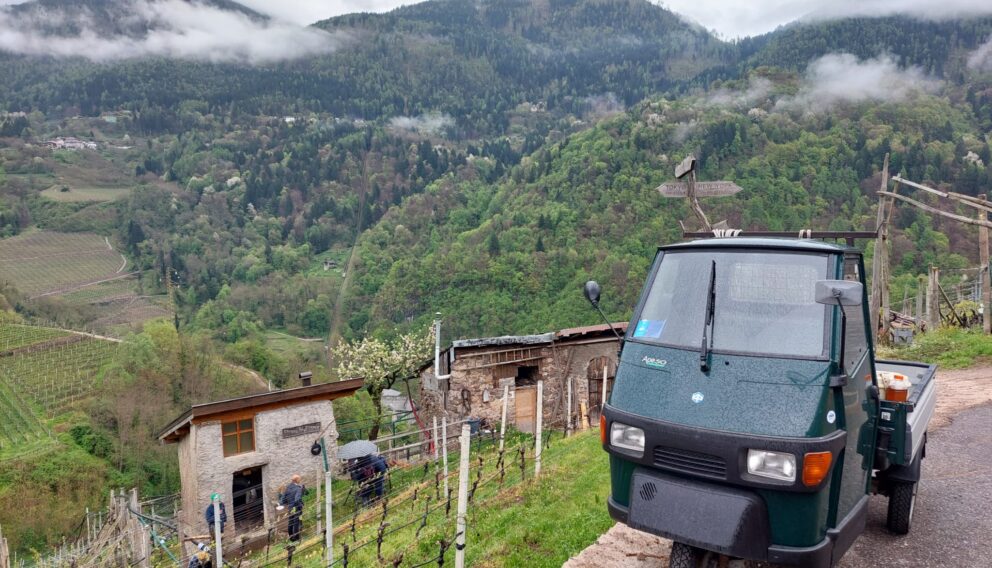Valley Soundscapes Near and Far

Text: Heikki Uimonen
A hiking trail from Cembra to Lago Santo is accompanied by the sound of a stream running through the nearby gorge. Before reaching the woods above the village, the hiker is greeted by the sound of the revving engines of mopeds, which can be heard clearly from the valley and for miles around.
Listening to the sonic environment from high cliffs or similar locations is an inherently contradictory act. On the one hand, the acoustic horizon is excellent: you can clearly identify individual sound sources and their direction, including their relationship to other sound sources. On the other hand, in less favourable weather conditions, the listening experience, and especially the field recordings, can be ruined in a matter of seconds: wind and rain cannot be avoided, and they are more present at higher altitudes than in more sheltered locations such as the narrow and winding streets of the village.
Descending to the vineyards of the valley reveals a different sonic environment. This is a soundscape researcher’s paradise, with a calm overall soundscape and again distinctive and clearly identifiable individual sounds. In addition, the slowly moving clouds on the mountain side make the scenery pleasant and soothing.
The typical sounds of the vineyard change with the seasons, from the crickets to the hydroelectric power station in the gorge, from the trimmers to the small tractors used to transport goods to the fields and the steep streets of the old town. My personal favourite is the Piaggio Ape (“bee”), a three-wheeled scooter manufactured since 1948 by a company better known as the makers of the Vespa (“wasp”) scooter. Very practical and cute, but a bit noisy: the driver decided to put on a pair of ear protectors over his head before starting the engine.
On Easter Monday, the SOMECO research team was invited to an informal meeting with our Italian colleagues in a local “baita” (cottage). The 10 square metre room was filled with fifteen participants, including local singers who generously provided us with local food and wine, accompanied by their excellent and spontaneous choral singing. Songs were also exchanged, as Kaj Ahlsved decided to contribute to the choir’s repertoire by introducing a song in Swedish, which was used during the toast. More solemn singing followed when the news of Pope Francis’ death reached the baita. Also, at eight o’clock in the evening, the village bells rang for 15 minutes instead of the usual three.
The sonic snapshots described above range from far-field to mid-field to near-field sounds and soundscapes experienced in different listening situations. These soundscapes are at once traditional, modern and mediated, social, global and religious, depending on how one is inclided to interpret them. Most importantly, they are human. The people of Cembra are experts in their soundscape, but they are also extremely kind in making it accessible to those who come from outside the village.
Thank you so much! Hope to see you again soon!